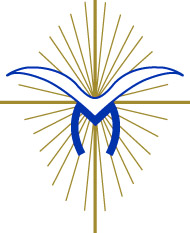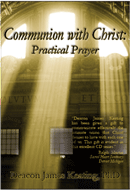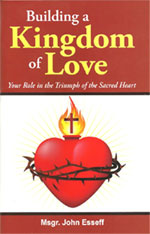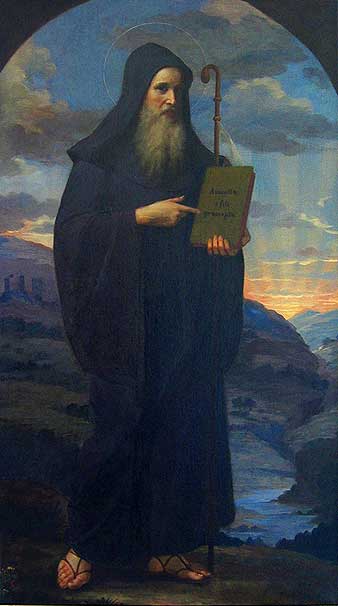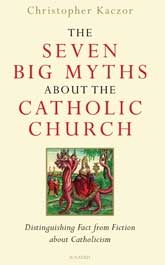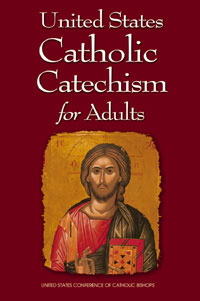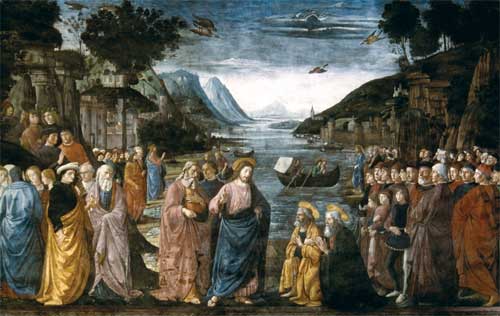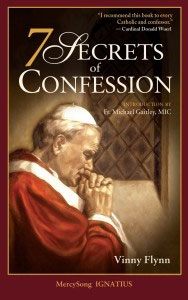Episode 14-The Way of Mystery: The Eucharist and Moral Living 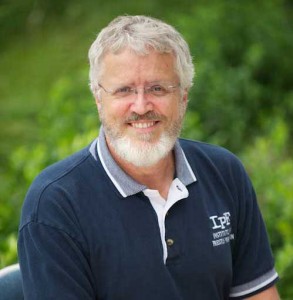
The Eucharist summons us like a beacon.  Even in the face of scandal, the moral authority of the Church shines through the Eucharist and challenges us to follow Christ in moving forward and allowing our hearts to be transformed. Mortal sin, what is it and how does it effect our relationship with the Eucharist…with Christ? Being present at mass even if you shouldn’t receive…not allowing yourself to be separated from worship.
[powerpress]
For more episodes in “The Way of Mystery” Series click here
Deacon James Keating, PhD, the director of Theological Formation for the Institute for Priestly Formation, located at Creighton University, in Omaha, is making available to â€Discerning Hearts†and all who listen, his series of programs entitled “The Way of Mysteryâ€.
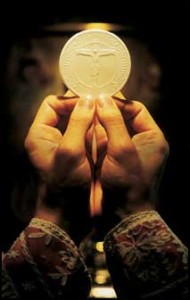 The Vatican II documents remind us that the spiritual journey is not made in a vacuum, that God has chosen to save us, not individually, but as The People of God. The Eucharist must help Christians to make their choices by discerning out of Christ’s paschal mystery. For this process to take place, however, Christians must first understand how the Eucharist puts them in touch with Christ’s passion, death, and resurrection, and what concrete implications being in touch with this mystery has for their daily lives.
The Vatican II documents remind us that the spiritual journey is not made in a vacuum, that God has chosen to save us, not individually, but as The People of God. The Eucharist must help Christians to make their choices by discerning out of Christ’s paschal mystery. For this process to take place, however, Christians must first understand how the Eucharist puts them in touch with Christ’s passion, death, and resurrection, and what concrete implications being in touch with this mystery has for their daily lives.
For more information on the “Institute of Priestly Formation†and for other material available by Deacon Keating, just click here
Don’t forget to pickup a copy of “Communion with Christ†, it is one of the best audio sets on prayer…ever!
Check out Deacon Keating’s “Discerning Heart†page
Tags: catholic, catholic podcast, catholic prayer, cathollc spirituality, Deacon Keating, james keating, the eucharist
This entry was posted on Wednesday, June 18th, 2014 at 7:07 am
You can follow any responses to this entry through the RSS 2.0 feed.
Show 3 ” Building a Kingdom of Love” – “The Gift of Nothing“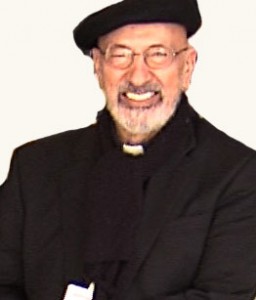
Msgr. Esseff begins by reading a passage from the book “The Gift of Nothing” by Patrick McDonnell.  He discusses how we all think what we will need “something”, but Msgr. helps us to see what God desires for us to see “the gift of nothing”.  What we desire deep down is intimacy.  Msgr. Esseff offers how Jesus reaches out to us in Divine Love…the Bread of Life.  The Eucharist offers  intimacy, will we accept the gift?
[powerpress]
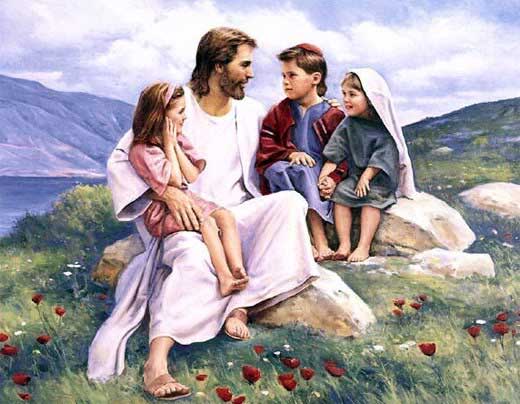
Msgr. John A. Esseff is a Roman Catholic priest in the Diocese of Scranton. He was ordained on May 30th 1953, by the late Bishop William J. Hafey, D.D. at St. Peter’s Cathedral in Scranton, PA. Msgr. Esseff served a retreat director and confessor to Blessed Mother Teresa.   He continues to offer direction and retreats for the sisters of the missionaries of charity around the world. Msgr. Esseff encountered St.  Padre Pio,  who would become a spiritual father to him. He has lived in areas around the world,  serving  in the Pontifical missions, a Catholic organization established by Bl. Pope John Paul II to bring the Good News to the world especially to the poor. Msgr. Esseff assisted the founders of the Institute for Priestly Formation and continues to serve as a spiritual director for the Institute. He continues to  serve as a retreat leader and director to bishops, priests and sisters and seminarians and other religious leaders around the world. Â
To obtain a copy of Msgr. Esseff’s book byvisiting here
Be sure to visit Msgr. Esseff’s website “Building a Kingdom of  Love”
Tags: catholic, catholic podcast, catholic prayer, cathollc spirituality
This entry was posted on Monday, May 19th, 2014 at 10:01 am
You can follow any responses to this entry through the RSS 2.0 feed.
Episode 27- The Holy Rule of St. Benedict: A Spiritual Path for Today’s World with Fr. Mauritius Wilde O.S.B., 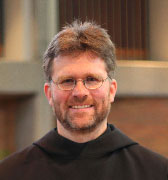 PhD.
PhD.
“To contemplate the Holy Eucharist”
[powerpress]
From the Holy Rule of St. Benedict:
PROLOGUE
Listen, O my son, to the precepts of thy master, and incline the ear of thy heart, and cheerfully receive and faithfully execute the admonitions of thy loving Father, that by the toil of obedience thou mayest return to Him from whom by the sloth of disobedience thou hast gone away.
To thee, therefore, my speech is now directed, who, giving up thine own will, takest up the strong and most excellent arms of obedience, to do battle for Christ the Lord, the true King.
In the first place, beg of Him by most earnest prayer, that He perfect whatever good thou dost begin, in order that He who hath been pleased to count us in the number of His children, need never be grieved at our evil deeds. For we ought at all times so to serve Him with the good things which He hath given us, that He may not, like an angry father, disinherit his children, nor, like a dread lord, enraged at our evil deeds, hand us over to everlasting punishment as most wicked servants, who would not follow Him to glory.
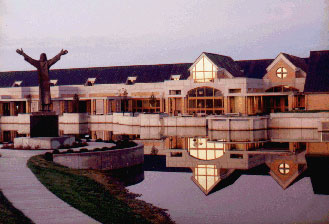 For more information about the ministry of the the Missionary Benedictines of Christ the King Priory in Schuyler, Nebraska visit here:
For more information about the ministry of the the Missionary Benedictines of Christ the King Priory in Schuyler, Nebraska visit here:
Tags: catholic, catholic podcast, catholic prayer, cathollc spirituality, Holy Rule of St. Benedict
This entry was posted on Wednesday, May 14th, 2014 at 4:46 pm
You can follow any responses to this entry through the RSS 2.0 feed.
Episode 11 -The Way of Mystery: The Eucharist and Moral Living 
The Liturgy of the Eucharist part 3 : The Eucharistic Prayer…God teaching us to pray. What are we doing in our participation and are we truly ready to receive the Body of Christ? Should we, in integrity, receive the Truth of Christ in Communion…do we really believe?
[powerpress]
For more episodes in “The Way of Mystery” Series click here
Deacon James Keating, PhD, the director of Theological Formation for the Institute for Priestly Formation, located at Creighton University, in Omaha, is making available to â€Discerning Hearts†and all who listen, his series of programs entitled “The Way of Mysteryâ€.
 The Vatican II documents remind us that the spiritual journey is not made in a vacuum, that God has chosen to save us, not individually, but as The People of God. The Eucharist must help Christians to make their choices by discerning out of Christ’s paschal mystery. For this process to take place, however, Christians must first understand how the Eucharist puts them in touch with Christ’s passion, death, and resurrection, and what concrete implications being in touch with this mystery has for their daily lives.
The Vatican II documents remind us that the spiritual journey is not made in a vacuum, that God has chosen to save us, not individually, but as The People of God. The Eucharist must help Christians to make their choices by discerning out of Christ’s paschal mystery. For this process to take place, however, Christians must first understand how the Eucharist puts them in touch with Christ’s passion, death, and resurrection, and what concrete implications being in touch with this mystery has for their daily lives.
For more information on the “Institute of Priestly Formation†and for other material available by Deacon Keating, just click here
Don’t forget to pickup a copy of “Communion with Christ†, it is one of the best audio sets on prayer…ever!
Check out Deacon Keating’s “Discerning Heart†page
Tags: body of christ, catholic, catholic podcast, catholic prayer, cathollc spirituality, james keating, the eucharist, theological formation
This entry was posted on Tuesday, April 29th, 2014 at 7:49 am
You can follow any responses to this entry through the RSS 2.0 feed.
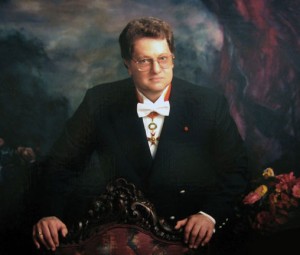 A very special “Inside the Pages” with Sir Gilbert Levine, who shares from his heart, this compelling tale of faith, friendship, and the healing power of music to bring people together. “The Pope’s Maestro” is an extraordinary and inspirational story of the unlikely friendship of  Sir Gilbert Levine and Pope John Paul II, who collaborated on symbolic acts of reconciliation: a series of internationally broadcast concerts designed to bring together people from all religious backgrounds under the auspices of the Vatican. Sir Gilbert  invites us all in to share in the special relationship bonded in music, prayer, and…love.
A very special “Inside the Pages” with Sir Gilbert Levine, who shares from his heart, this compelling tale of faith, friendship, and the healing power of music to bring people together. “The Pope’s Maestro” is an extraordinary and inspirational story of the unlikely friendship of  Sir Gilbert Levine and Pope John Paul II, who collaborated on symbolic acts of reconciliation: a series of internationally broadcast concerts designed to bring together people from all religious backgrounds under the auspices of the Vatican. Sir Gilbert  invites us all in to share in the special relationship bonded in music, prayer, and…love. 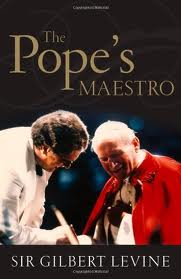 [powerpress] You can find more about this wonderful book here
[powerpress] You can find more about this wonderful book here
Tags: catholic, catholic podcast, catholic prayer, cathollc spirituality
This entry was posted on Wednesday, April 23rd, 2014 at 12:32 am
You can follow any responses to this entry through the RSS 2.0 feed.
In”The Seven Big Myths about Marriage: What Science, Faith and Philosophy Teach Us about Love and Happiness”, Dr. Christopher Kaczor, 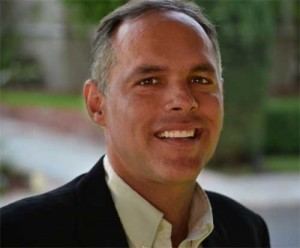 along with his wife Jennifer, shines an important light of truth on one of the most important issues of our day.  Beginning with basic foundational principals and understandings, Dr. Kaczor rationally examines key issues in the marriage debate and carefully, and quite thoroughly, debunks the leading “myths” about marriage.  An excellent resource and HIGHLY recommended for all who care about and engage in the discussions on marriage.
along with his wife Jennifer, shines an important light of truth on one of the most important issues of our day.  Beginning with basic foundational principals and understandings, Dr. Kaczor rationally examines key issues in the marriage debate and carefully, and quite thoroughly, debunks the leading “myths” about marriage.  An excellent resource and HIGHLY recommended for all who care about and engage in the discussions on marriage.
[powerpress]
You can find the book here
If I were a pastor, I would make this book required reading for engaged couples in all my marriage classes. —Peter Kreeft, Ph.D., Author, Jacob s Ladder: Ten Steps to Truth
The media portrayals of the public debates over marriage and its meaning often generate more heat than light. In this carefully crafted and accessible book, Professor Kaczor provides just the sort of illumination that is absent from those portrayals. I cannot think of a better book that offers such a clear and winsome account of marriage and its meaning, and what that tells us about human dignity and happiness. —Francis J. Beckwith, Professor of Philosophy, Baylor University
‘Don’t miss:
IP#182 Dr. Christopher Kaczor – The Seven Big Myths About the Catholic Church on Inside the Pages
and
“Life Issues” ….In Conversation with Dr. Christopher Kaczor
Tags: catholic, catholic podcast, catholic prayer
This entry was posted on Wednesday, April 16th, 2014 at 1:47 pm
You can follow any responses to this entry through the RSS 2.0 feed.
USCCA38 Â Chapter 30 -Â Marital Fidelity pt 1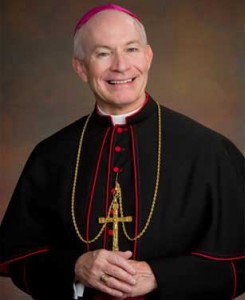
[powerpress]
Archbishop Lucas offers insights on the US Catholic Catechism for Adults Chapter 30:
The Catechism states that sexuality involves the whole person. “Sexuality affects all aspects of the human person in the unity of his body and soul. It especially concerns affectivity, the capacity to love and to procreate, and in a more general way the aptitude for forming bonds of communion with others†(CCC, no. 2332).
The Sixth Commandment summons spouses to practice permanent and exclusive fidelity to one another. Emotional and sexual fidelity are essential to the commitment made in the marriage covenant. God established marriage as a reflection of his fidelity to us. The vows made by the spouses at their wedding to be faithful to one another forever should witness the very covenant God has made with us.
United States Conference of Catholic Bishops (USCCB) (2012-04-02). United States Catholic Catechism for Adults (Kindle Locations 5856-5861). United States Conference of Catholic Bishops (USCCB). Kindle Edition.
The Most Reverend George J. Lucas leads the Archdiocese of Omaha.Â
For other episodes in the visit our Archbishop George Lucas page
This programs is based on:
More information can be found here.
We wish to thank the USCCB for the permissions granted for use of  relevant material used in this series.
[ezcc]
Tags: Catechism, Catholic Catechism, George Lucas
This entry was posted on Wednesday, April 9th, 2014 at 3:22 pm
You can follow any responses to this entry through the RSS 2.0 feed.
Episode 5 -The Way of Mystery: The Eucharist and Moral Living 
The penitential rite of the mass, while not the pivotal point, it is one of the most important points of the mass, and key in our moral conversion…it’s about the crucifixion to sin, meeting evil with love.
[powerpress]
For more episodes in “The Way of Mystery” Series click here
Deacon James Keating, PhD, the director of Theological Formation for the Institute for Priestly Formation, located at Creighton University, in Omaha, is making available to â€Discerning Hearts†and all who listen, his series of programs entitled “The Way of Mysteryâ€.
 The Vatican II documents remind us that the spiritual journey is not made in a vacuum, that God has chosen to save us, not individually, but as The People of God. The Eucharist must help Christians to make their choices by discerning out of Christ’s paschal mystery. For this process to take place, however, Christians must first understand how the Eucharist puts them in touch with Christ’s passion, death, and resurrection, and what concrete implications being in touch with this mystery has for their daily lives.
The Vatican II documents remind us that the spiritual journey is not made in a vacuum, that God has chosen to save us, not individually, but as The People of God. The Eucharist must help Christians to make their choices by discerning out of Christ’s paschal mystery. For this process to take place, however, Christians must first understand how the Eucharist puts them in touch with Christ’s passion, death, and resurrection, and what concrete implications being in touch with this mystery has for their daily lives.
For more information on the “Institute of Priestly Formation†and for other material available by Deacon Keating, just click here
Don’t forget to pickup a copy of “Communion with Christ†, it is one of the best audio sets on prayer…ever!
Check out Deacon Keating’s “Discerning Heart†page
Tags: Deacon Keating, institute for priestly formation, james keating, the eucharist, theological formation
This entry was posted on Tuesday, February 25th, 2014 at 1:16 pm
You can follow any responses to this entry through the RSS 2.0 feed.
God’s Plan for Marriage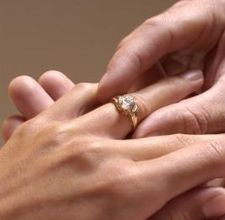
[powerpress
The Pharisees asked Jesus if he thought it was lawful for a man to divorce his wife.
Jesus responded by pointing them back to God’s original plan: “From the beginning,†Jesus explained, “God made them male and female. For this reason a man shall leave his father and mother, and the two shall become one flesh. So they are no longer two but one flesh. Therefore what God has joined together, no one must separate.â€1
Jesus came to restore what was lost in the Fall, to make us new creations who live by the power of the Holy Spirit. We should recognize that the strife and troubles of our world are not normal, but the result of the Fall and sin.
Therefore, Catholic marriages should not look like secular marriages. They are sacramental, which means that our marriages are to be the very thing in our lives that God uses to help us grow in holiness. Those who truly put Christ and the sacraments at the center of their marriage will find that in spite of the challenges, their love for one another will grow and help lead them closer in union to God.
1 – Mk. 10:6-9
Tags: God's Plan, Jesus, Marriage God's Plan
This entry was posted on Tuesday, February 4th, 2014 at 12:59 am
You can follow any responses to this entry through the RSS 2.0 feed.
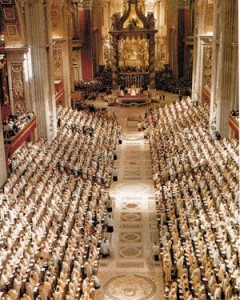 Apostolic Succession of Bishops
Apostolic Succession of Bishops
[powerpress]
There are many forms of church governance among Christians today. In some churches congregations vote to make decisions; in others the church is run by a group of elders; and in still others, authority resides with bishops.
While all Christians point to Scripture to support their church structure, it is very difficult to determine the precise way the early Church was governed from the Bible alone.
But in the year 110 A.D., only about 50 years after most of the New Testament was written, St. Ignatius of Antioch described the early church leadership in his letters:Â Each area was led by a single bishop who was accompanied by priests and deacons in ministry.
Ignatius wrote, “let no one do anything of concern to the Church without the bishop. Let that be considered a valid Eucharist which is celebrated by the bishop or by one whom he appoints. … [T]his … is pleasing to God, so that whatever is done will be secure and valid.â€1
Ignatius himself was with the apostle John, so we have every reason to trust that this basic church structure which the Catholic Church has to this day comes from the apostles themselves.
1 – Letter to the Smyrnaeans 8:1
Tags: Apostolic Succession of Bishops Apostolic Succession, church governance, church structure, the early Church
This entry was posted on Wednesday, January 29th, 2014 at 8:39 am
You can follow any responses to this entry through the RSS 2.0 feed.
Is Jesus Calling? A Spiritual Guide to Discerning Your Vocational Call with Fr. Paul Hoesing – 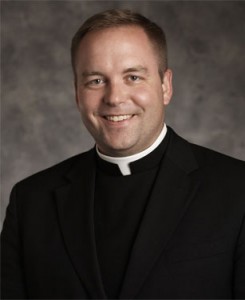 episode 1: Introduction – Whether it’s to the priesthood, religious life, married life…discerning what our vocation is can be a challenge, but it doesn’t have to be. Fr. Hoesing discusses what discernment is, what the process is like, and what can help guide us along the way.
episode 1: Introduction – Whether it’s to the priesthood, religious life, married life…discerning what our vocation is can be a challenge, but it doesn’t have to be. Fr. Hoesing discusses what discernment is, what the process is like, and what can help guide us along the way.
[powerpress]
Based on “Is Jesus C alling You To Be A Catholic Priest: A helpful guide”, published by National Conference of Diocesan Vocation Director.
Fr. Paul Hoesing serves as the Vocation Director for the Archdiocese of Omaha, NE.
Check out “For Your Vocation.org”
Tags: archdiocese of omaha, discernment, married life, NE, Paul Hoesing, priesthood, religious life, single life
This entry was posted on Friday, November 29th, 2013 at 8:39 am
You can follow any responses to this entry through the RSS 2.0 feed.
The story and history of Saint Clement.
![]() First, start with the podcast above featuring the son of the Fathers, Mike Aquilina talking about St. Clement, then…
First, start with the podcast above featuring the son of the Fathers, Mike Aquilina talking about St. Clement, then…
Clemens Romanus was born in Rome in Italy during the time that the Christian faith was being spread and Christians were being persecuted by the Roman Emperors. He is believed to be of Jewish descent and a freeman of Rome. He worked as a tanner
during the early part of his life. He was then converted to Christianity and became a disciple of St. Peter and of St. Paul. Following the death of Saint Peter he took over his position and became the fourth Pope and Bishop of Rome continuing to convert Romans from the religion of the old Roman gods to Christianity.
Saint Clement was banished from Rome during the reign of the Emperor Trajan (September 18, 53 – August 9, 117) due to his beliefs and unpopularity with the Roman rabble. He was banished to Chersonesus, which was an ancient Greek colony under Roman rule, in the south western part of Crimea (part of the Ukraine). In Chersonesus he was sentenced to work with other prisoners in a sto
ne quarry where he continued to convert people. The number and success of his conversions attracted the attention of the Roman prefect who sentenced him to death. Clement was he was bound to an anchor and cast into the sea. He died in A.D.100.
How blessed and amazing are God’s gifts, dear friends Life with immortality, splendor with righteousness, truth with confidence, faith with assurance, self-control with holiness And all these things are within our comprehension. Clement of Rome

Basilica of Saint Clement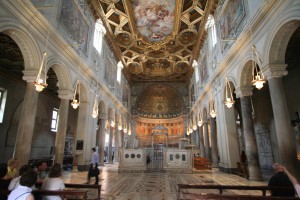
The Basilica di San Clemente is an early Christian basilica in Rome dedicated to Pope St. Clement. Its beautiful interior is especially notable for its three historical layers.
The main upper church is one of the most richly decorated churches in Rome. The vast majority of its architecture and art dates from its construction in the early 12th century. The entrance is on the left aisle.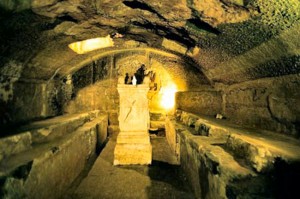
The most striking sight is the 12th-century apse mosaic, in a golden-bronze color and featuring a large cross in the center. In the center of the apse is a throne, whose back is part of a martyr’s tomb.
The high altar contains the relics of St. Clement of Rome and St. Ignatius of Antioch. Faded frescoes decorate many of the walls, and date from the 6th to 11th centuries. They depict New Testament scenes and lives of several saints.
Tags: basilica di san clemente, Church, churches in rome, clement of rome, emperor trajan, father of the church, fathers mike, mike aquilina, rome, saint clement, st clement of rome
This entry was posted on Saturday, November 23rd, 2013 at 12:02 am
You can follow any responses to this entry through the RSS 2.0 feed.
“Good Pope, Bad Pope: Their Lives, Our Lesson” is another terrific book by the prolific Mike Aquilina.  This is a much needed 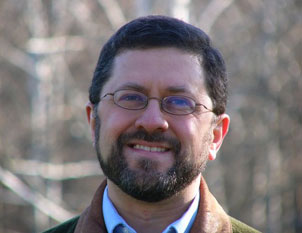 resource for all Catholics.  Those of us who love and appreciate the gift of the Papacy in the life of the Church, if we are honest with ourselves, cringe a bit inside when the facts of history uncover those Popes who were…well…bad.  Leave it to Mike Aquilina to guide us through those notorious lives and times, while helping  us to see the lesson we can learn from those particular experiences.  Mike also lifts up those outstanding men who were more than just “good” Popes (which the overwhelming majority were), but reminds of  popes like Bl. John Paul II,  who could be called “great”.  Be not afraid of history, especially when its in the hands of Mike Aquilina.
resource for all Catholics.  Those of us who love and appreciate the gift of the Papacy in the life of the Church, if we are honest with ourselves, cringe a bit inside when the facts of history uncover those Popes who were…well…bad.  Leave it to Mike Aquilina to guide us through those notorious lives and times, while helping  us to see the lesson we can learn from those particular experiences.  Mike also lifts up those outstanding men who were more than just “good” Popes (which the overwhelming majority were), but reminds of  popes like Bl. John Paul II,  who could be called “great”.  Be not afraid of history, especially when its in the hands of Mike Aquilina.
[powerpress]
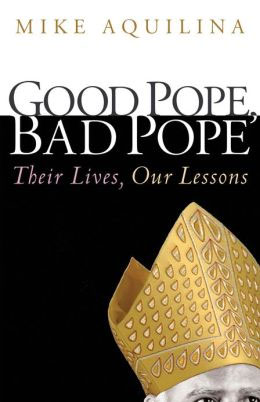 You can find the book here
You can find the book here
From the description:
Every pope is by definition a remarkable man. But the popes whose stories you’ll read here were chosen because they reveal how the papacy developed. They show us how Christ kept his promise to his bride, the Church, not only in her health but also in her sickness. The great popes advanced our understanding of Christian doctrine. But even more remarkable, the worst popes could do nothing to damage the teaching of the Church.
That’s why, even in its darkest moments, the story of the papacy is a story of triumph. And that’s why it’s worth knowing these twelve popes.
Tags: catholic, catholic podcast, catholic prayer
This entry was posted on Wednesday, October 9th, 2013 at 9:26 am
You can follow any responses to this entry through the RSS 2.0 feed.
What a delight to talk once again to the incredible Vinny Flynn, this time about his book “The 7 Secrets of Confession”. 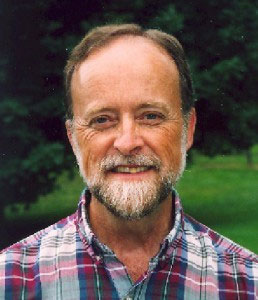 Vinny has such a passion for the Catholic faith, and in particular for the Sacraments of the Church, that it’s difficult not to be inspired by his joy.  This is perfect for anyone who struggles with this rich gift of grace and mercy, the sacrament  “Confession”.  But even more than that, it is like a “booster shot” for anyone who frequents the confessional, but may be taking it for granted.  A definite “must have” for every Catholic home library.  This would also be a great gift for those in the RCIA or in sacramental preparation in RE classes.
Vinny has such a passion for the Catholic faith, and in particular for the Sacraments of the Church, that it’s difficult not to be inspired by his joy.  This is perfect for anyone who struggles with this rich gift of grace and mercy, the sacrament  “Confession”.  But even more than that, it is like a “booster shot” for anyone who frequents the confessional, but may be taking it for granted.  A definite “must have” for every Catholic home library.  This would also be a great gift for those in the RCIA or in sacramental preparation in RE classes.
[powerpress]
You can find the book here
Vinny Flynn s 7 Secrets are like seven explosions that blow away the obstacles keeping us from the Sacrament of Mercy. If you ve ever dragged your feet on the way to confession, gotten discouraged about confessing the same sins over and over, or wondered how your confessions could be more fruitful, then you ll love this book. It turns what many see as a tiresome obligation into a precious, longed-for encounter with the Lord.
—Fr. Michael Gaitley, MIC Author, 33 Days to Morning Glory
This entry was posted on Monday, September 23rd, 2013 at 11:06 am
You can follow any responses to this entry through the RSS 2.0 feed.
We talk with Mike Aquilina  about St. Gregor the Great, a father of the Church.
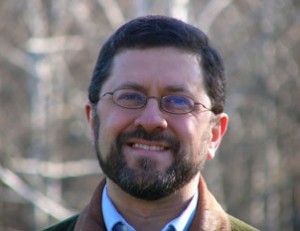 [powerpress]
[powerpress]
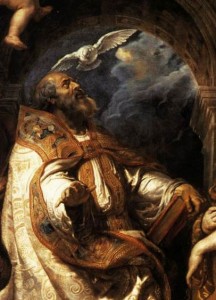 St. Gregory the Great…the tradition of the Church considers him one of the four great doctors of the Latin Church. Born in Rome, Italy, in AD 540, St. Gregory was the son of Gordianus, a wealthy senator, and Silvia, who later became a saint. (Saints make saints after all…).
St. Gregory the Great…the tradition of the Church considers him one of the four great doctors of the Latin Church. Born in Rome, Italy, in AD 540, St. Gregory was the son of Gordianus, a wealthy senator, and Silvia, who later became a saint. (Saints make saints after all…).
His youth was a troubled one. In his writings he chronicles the perpetual seiges that Rome endured at the hands of the barbarians.  Those nasty Lombards! Pillaging, raping, massacring, they would plague the Church and the people of the land for 200 years, you name it..by any standard, they were bad!
Saint Gregory became the Prefect of Rome at the age of thirty, and the people loved him because he was able to keep them safe. A few years later, like his parents, he gave his wealth away. He became a Benedictine monk. But the pope of the time, recalled him to Rome to serve as a deacon and to help the city, which was again attacked by the Lombards.
On the third day of September in 590, after he had first been ordained a priest, Saint Gregory was consecrated Pope and Bishop of Rome, in Saint Peter’s Basilica. He was the first monk to become Pope.  The Holy Spirit didn’t waste anytime moving him to service!
Through Saint Leander and his brother, Saint Isidore of Seville, as well as the martyr 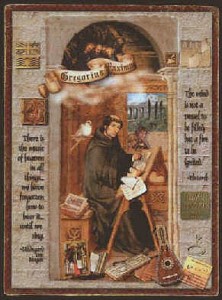 Saint Hermenegild, Saint Gregory recovered Spain from the Arians. Through Queen Theodelinda, the wife of the Lombard King Agilulf, he was able to begin the conversion of the Lombard nation and the tempering of their ferocious and cruel natures. He won France back and began conversions in England. Saint Gregory was, above all else, a vigilant guardian of the Church’s doctrine, always the mark of a holy Pope. He ordained, early in his pontificate that the first four Ecumenical Councils of the Church should be treated with the respect given to the four Gospels. He worked unceasingly to stamp out heresy. He ordered that at the beginning of Lent the blessed ashes should be placed on the foreheads of the faithful, instead of only the head of the Pope — as had been the custom up to that time — and that the priest should repeat to each one, “Remember man, that dust thou art, and unto dust thou shalt return”. excerpted in part from an article by Sister Catherine Goddard Clark, M.I.C.M.
Saint Hermenegild, Saint Gregory recovered Spain from the Arians. Through Queen Theodelinda, the wife of the Lombard King Agilulf, he was able to begin the conversion of the Lombard nation and the tempering of their ferocious and cruel natures. He won France back and began conversions in England. Saint Gregory was, above all else, a vigilant guardian of the Church’s doctrine, always the mark of a holy Pope. He ordained, early in his pontificate that the first four Ecumenical Councils of the Church should be treated with the respect given to the four Gospels. He worked unceasingly to stamp out heresy. He ordered that at the beginning of Lent the blessed ashes should be placed on the foreheads of the faithful, instead of only the head of the Pope — as had been the custom up to that time — and that the priest should repeat to each one, “Remember man, that dust thou art, and unto dust thou shalt return”. excerpted in part from an article by Sister Catherine Goddard Clark, M.I.C.M.
He is known for his magnificent contributions to the Liturgy of the Mass and Office. The “Gregorian Chant” is named in honor of Saint Gregory’s patient labor in restoring the ancient chant of the Church and in setting down the rules to be followed so that Church music might more perfectly fulfill its function.
Saint Gregory the Great died on the twelfth of March, 604, at the age of sixty-four. He was canonized immediately after his death. Later, because of the volume, the extraordinary insight and the profundity of his writings, the depth and extent of his learning, and the heroic holiness of his life, the Church gratefully placed him beside Jerome and Ambrose and Augustine. Saint Gregory the Great became the fourth of the Church’s four great Doctors of the West. –
What would today be like without a little Gregorian Chant in honor of our St. Gregory?
 Spiritual Writings:
-Â Pastoral Rule
-Â Register of Letters
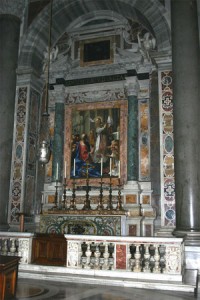 The altar of St. Gregory the Great at St. Peter’s in Rome. One of my favorite places to pray at the Vatican.Â
The altar of St. Gregory the Great at St. Peter’s in Rome. One of my favorite places to pray at the Vatican.Â
Tags: benedictine monk, bishop of rome, Church, ecumenical councils of the church, fathers mike, holy spirit, Latin Church, our sunday visitor, rome, saint gregory
This entry was posted on Tuesday, September 3rd, 2013 at 12:01 am
You can follow any responses to this entry through the RSS 2.0 feed.

